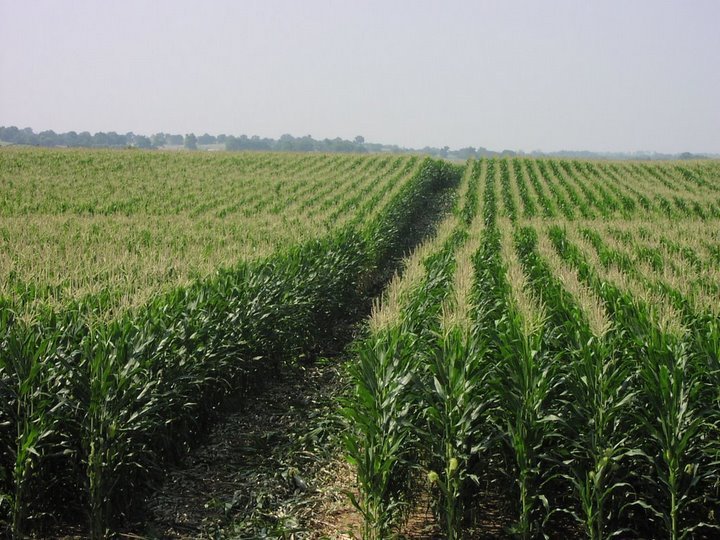Pesticides have helped farmers salvage much of their crop despite this year’s persistent drought in the American Midwest, agriculture expert David Bridges reports in the Des Moines Register.
Variable Weather Threatens Crops
Agriculture has long been at the whim of fickle weather—droughts, floods, hail storms, wildfires, hot spells, cold spells, etc. But the summer of 2012 was extraordinarily brutal in the American Midwest. Crops, pasturelands, and hay fields all suffered from lack of rainfall.
The U.S. Department of Agriculture (USDA) announced in July that 1,297 counties in 29 states were disaster areas. Crop yields dropped by 12 percent, from a forecast of 166 bushels per acre to 146.
American farmers not only feed Americans but also produce food for people throughout the world. As such, the effects of the farm belt drought will be felt in food prices in India, China, Africa, and elsewhere.
Pesticides Preserved High Yields
Things could have been a lot worse, however, says David Bridges, an agronomist and president of Abraham Baldwin Agricultural College (ABAC) in Tifton, Georgia. ABAC is part of Georgia’s state university system. Bridges reports what ultimately limited the drought’s damage is a substance routinely demonized by environmental activists: pesticides.
“Without them [pesticides], things would be worse, on all ends of our current dilemma,” Bridges reported in the July 25 Register. “Production drives yields, or usable product, per acre. Pesticides increase production, which in turn boosts yields.”
Bridges cited the example of corn to underscore his point about the importance of pesticides. Corn is used for food for humans and feed for animals, with more than 800 million bushels, or 7 percent of U.S. annual production, shipped overseas. “Thanks to technologies from seeds to pesticides, yields have increased from slightly more than 3 billion bushels in 1956, time of the last big drought and roughly the start of the bio-tech revolution, to more than 12 billion bushels in 2011.”
Bridges served on a team of academic researchers last year that found just one pesticide, atrazine, accounted for some 600 million bushels—or about 5 percent—of U.S. corn production.
Technology Delivers Benefits
Angela Logomasini, Ph.D., director of risk studies at the Washington-based Competitive Enterprise Institute, agrees with Bridges on the benefits of pesticides and other crop-protection technologies.
“Agrochemicals represent a subset of the many technologies and practices designed to promote high-yield farming, making it possible for farmers to increase food production per acre,” Logomasini said. “Other technologies include biotechnology and better soil and water management.”
Citing research conducted by the Hudson Institute’s Dennis Avery, Logomasini emphasized the importance of pesticides in conserving farmland.
“If farmers continued to use 1950s technology—when most of the world did not use pesticides and fertilizers—they would have to plant 10 million square miles of additional land to generate the food that is produced today.”
Bonner R. Cohen, Ph. D., ([email protected]) is a senior fellow at the National Center for Public Policy Research.





